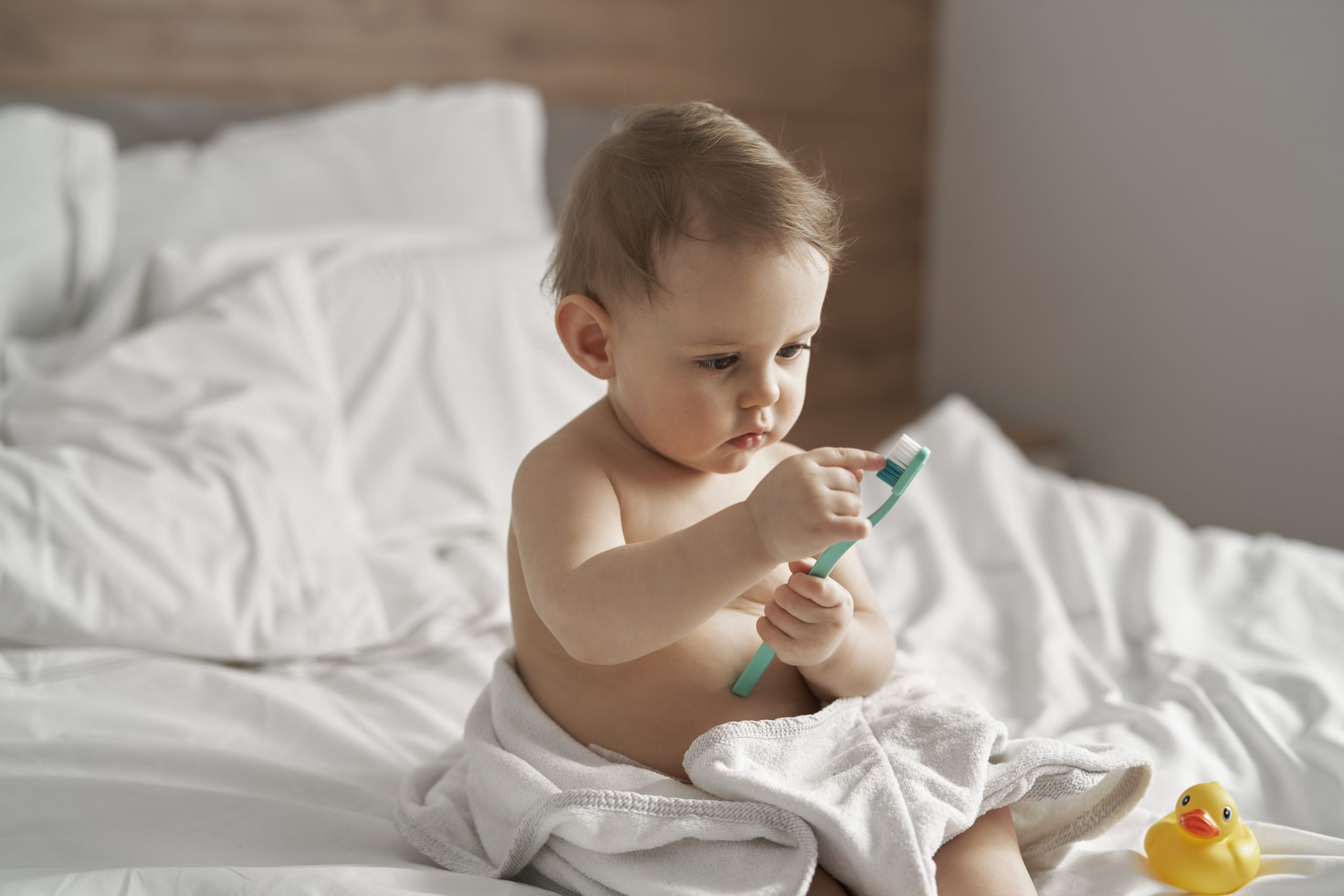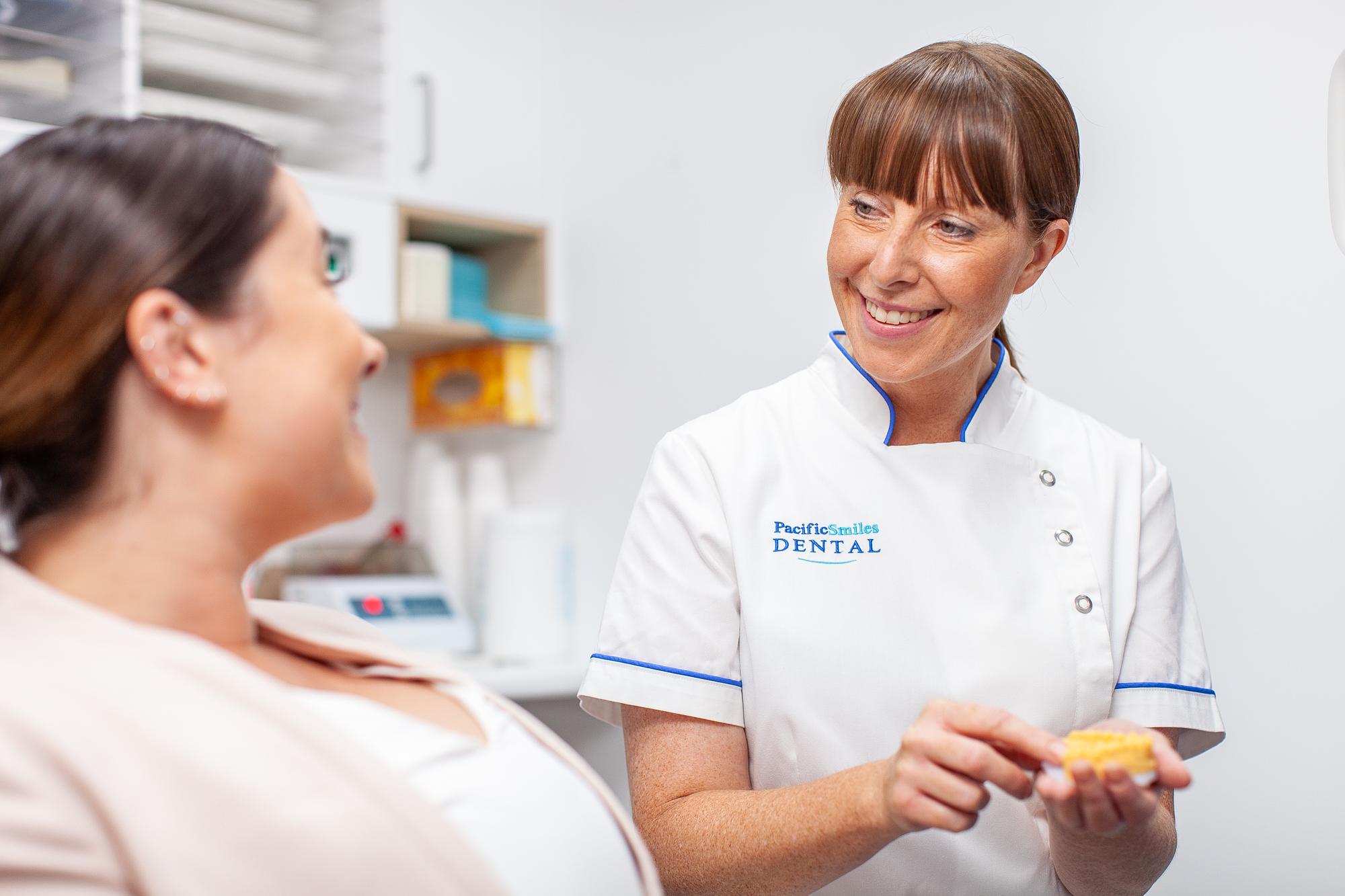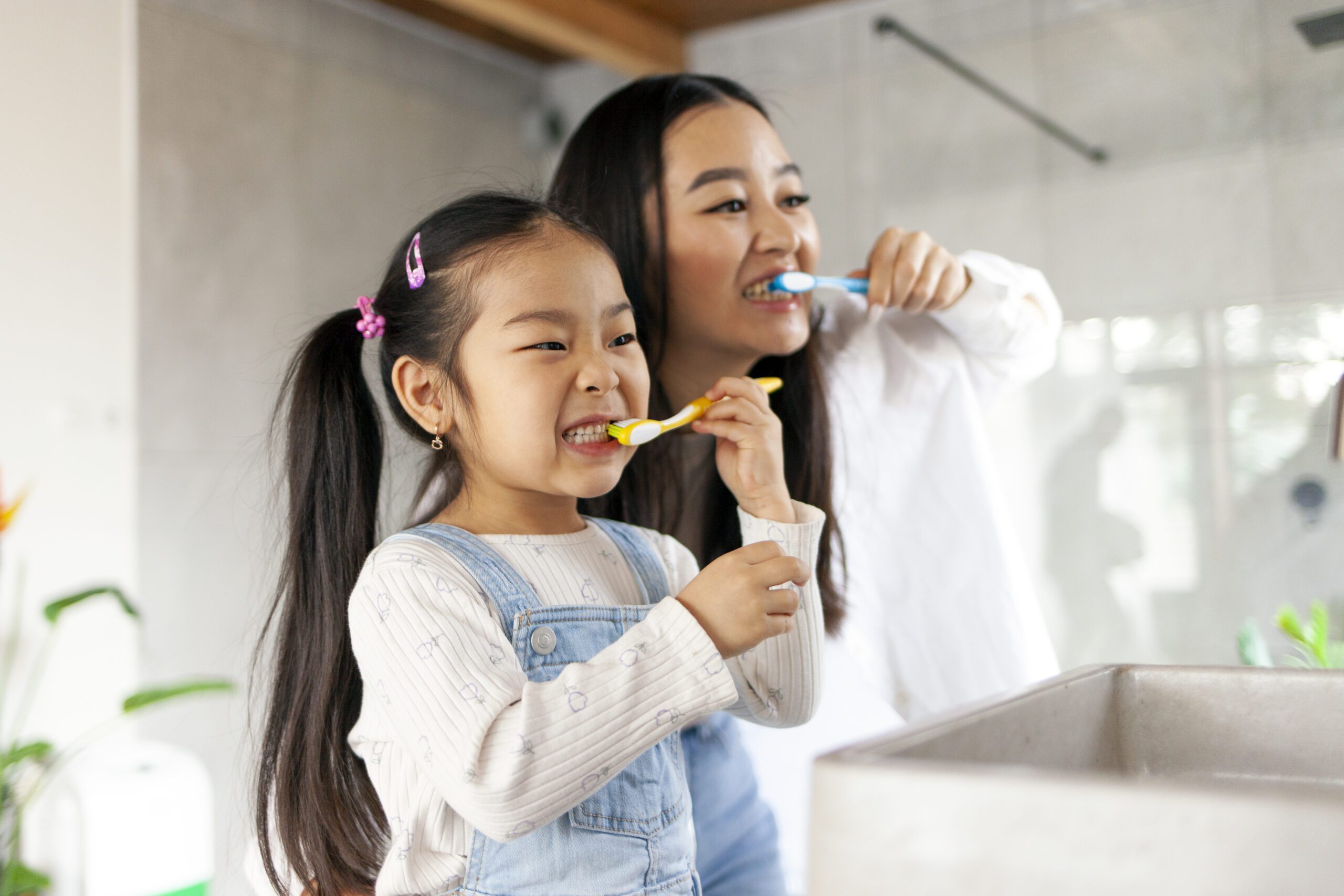 13 May 2024
13 May 2024
Taking care of your family’s dental health can sometimes feel overwhelming, especially when it comes to your little one’s precious smiles. Baby teeth, also known as milk, primary, or deciduous teeth, start to appear in the mouth at around 9 months of age. However, this milestone can range between 3 – 12 months. By the age of 3 years old, most children will have their full set of 20 baby teeth.
There are many misconceptions when it comes to baby teeth and it’s natural for parents and soon-to-be parents to have questions about how to best care for them. We’ve debunked the myths and facts around baby’s teething so you can ensure your baby’s dental health journey is off to a great start.
Fact vs fiction
Facts
Looking after baby teeth starts even before a tooth has appeared – Clean your baby’s gums and tongue with a soft, damp cloth, even before they have any teeth. Once their teeth appear, progress from a cloth to a small, soft, toothbrush and start using a children’s, low-dose fluoridated toothpaste from 18 months of age.
- Baby teeth set the pattern for the adult or permanent teeth to follow. Every tooth is precious so it’s important to care for even their baby teeth.
- Baby teeth are prone to decay. Baby teeth aren’t as strong as adult teeth and therefore can be damaged by bacteria much easier. Early childhood decay is often caused by sugary drinks and foods, including fruit juices, flavoured yoghurts and dried fruit.
Fiction
- Baby teeth move up and down in the gums. It can look like those little teeth are coming up, then down, but that’s an illusion. As a tooth erupts through the gum, there can be localised swelling. As the swelling subsides, more of the top of the tooth can be seen.
- Baby teeth don’t matter because they’re going to fall out anyway. Every baby tooth has a role to play in eating, talking and keeping a place for the adult tooth sitting under the gums.
- Baby teeth don’t need brushing. Tooth decay works in the same way, no matter how old a person is. The sugar in foods feed the bacteria in dental plaque which allows acid to attack the tooth enamel, causing a hole to form. Stopping the cycle of decay is helped by good oral hygiene and avoiding too much sugar.
- Don’t worry if a baby tooth is lost. When a baby or adult tooth is lost, it’s like taking a book from a bookshelf and not replacing it. It’s the same way in the mouth, the surrounding teeth can then move into the empty space. This can cause functional (chewing) as well as aesthetic (appearance) changes.
- Babies and children can brush their own teeth. It’s not until they’re around 8 years old that children have the manual ability to do a thorough job of tooth cleaning. Let them practice, but always brush them yourself as well.
A final tip
Take your baby for their first dental visit when their first tooth erupts or when they turn 1, whichever comes first. Book an appointment with your dentist to learn more about your baby’s teeth. If you’re unsure of what is best for your child, your dentist can provide information and help for you and your baby.





